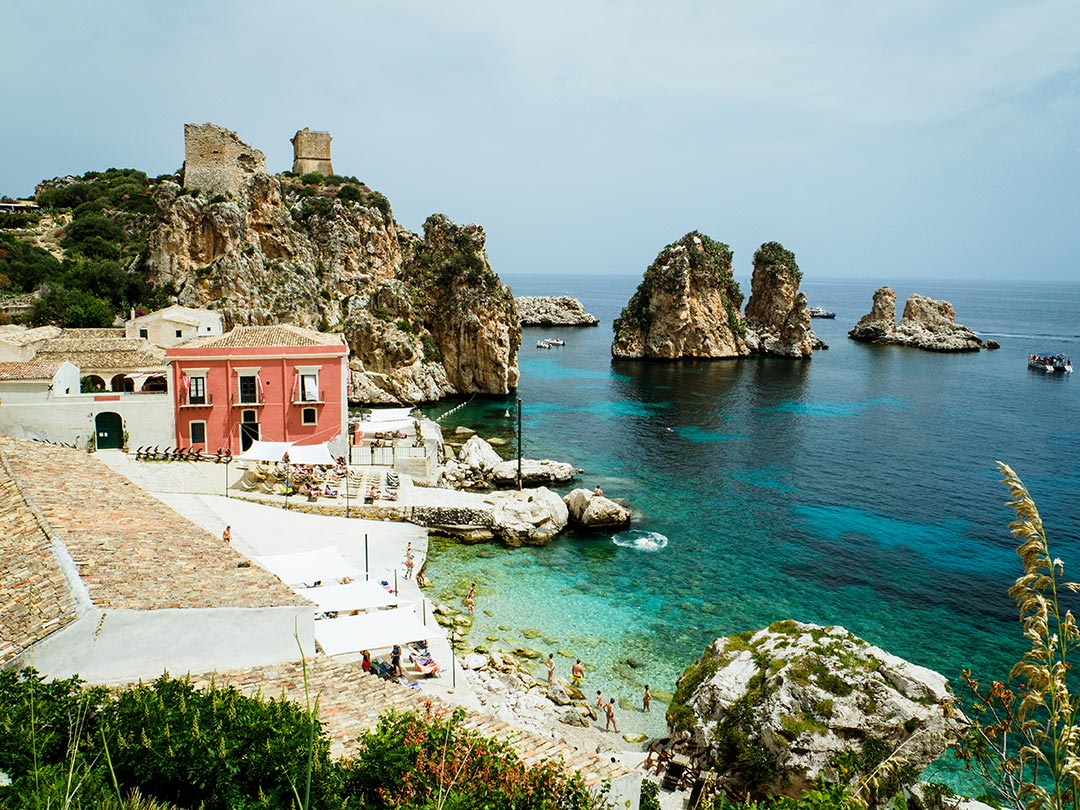The wine
The question many people ask is: what came first, the wine or the town ? Logically, the sweet wine takes its name from that of the town. In 1773, the English merchant John Woodhouse was attracted by the intense taste of this wine aged in oak barrels. As a matter of fact the intensity of the flavour was similar to that of the Portuguese and Spanish wines, which were very popular in England at that time
History
The city of Marsala was founded around 400 BC by survivors of Mozia who, after fleeing their city, which was destroyed by Syracuse, found shelter by settling on the Marsala coast. Initially, the city was called Lilybaeum.
Throughout its existence, the city has been subject to numerous colonial attacks by people from different cultures. There were gloomy periods after it was destroyed by the Vandals and ended up under the dominion of Byzantium who ignored the requests for help leaving it at the mercy of pirate attacks.
Later, when it fell under Arab rule, the city underwent a complete rebirth. It was renamed Marsala and became the centre of naval trade throughout the Mediterranean. This trade brought riches and there was a real urban revolution where many buildings were built in the Arabic style.
After the Arabs, there were other people who were interested in colonising Marsala, including the Normans, the Swabians and the Aragonese, but it was not until Spanish rule that the city saw a new social and cultural development. The Spaniards exploited the fertility of the hinterland for cultivation, expanding the city and placing it among the most renowned Sicilian strongholds.
In 1817, the city of Marsala was included in the province of Trapani after the establishment of the Kingdom of the Two Sicilies In 1860 Giuseppe Garibaldi and “The Thousand” landed in the harbor of Marsala and this was the starting point for the unification of Italy.
Marsala features numerous places of interest:
CHIESA MADRE (MOTHER CHURCH)
This is Marsala’s cathedral. Its construction began in 1176 and continued for several eras. As a result, visitors can distinguish various architectural styles, ranging from the original Norman, to Baroque and Byzantine. The church is dedicated to St Thomas.
PORTA GARIBALDI
It was constructed in 1685 by order of Charles II, King of Spain and Sicily. The gate is the most well-preserved of the other remaining gates in the city walls. It takes its name from the leader Giuseppe Garibaldi who passed through it on the day of his landing at Marsala.
MERCATO ANTICO (OLD MARKET)
This area is located near Porta Garibaldi and can be transformed according to the time of day. In the mornings it is a fish market where the numerous freshly caught fish are delivered and sold daily. In the evening, numerous nightclubs entertain tourists and residents with live music.
CHIESA DEL PURGATORIO (CHURCH OF THE PURGATORY)
In the opinion of many people, this is the most beautiful church in the Marsala area due to the Baroque style that characterises its interior and exterior. The columns and statues feature Corinthian elements while, inside, the naves and apses are decorated with beautiful stucco work.
WINE CELLARS
There are many wineries producing wine and Marsala throughout the area. The most famous ones, among the many in the historical centre, are MOZIA, FLORIO, DONNAFUGATA and PELLEGRINO. A guided tour explains how the wines are produced according to tradition and allows you to taste the various local products.
SUGGESTIONS
Marsala è una grande città sviluppata in estensione, ma il centro storico è relativamente piccolo e visitabile a piedi. Tuttavia, vale la pena spendere una giornata intera per visitare interamente questa stupenda città. Le numerose architetture e i luoghi storici valgono sicuramente il tempo della visita, accompagnati a qualche degustazione di cibi e vini locali.
LINK
DISTANCE FROM KITE HOSTEL STAGNONE
20 minutes



